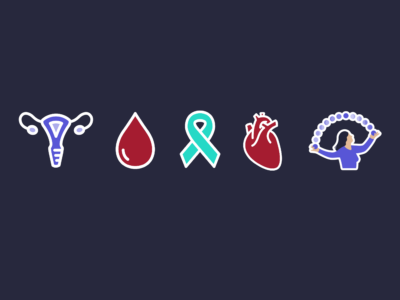March 2022: More details about the information presented in the below tables are included in the study update on Periods, polycystic ovarian syndrome, and heart health.
Table 1: Time to menstrual cycle regularity, by polycystic ovarian syndrome diagnosis status
| Time to a regular cycle | Participants without PCOS | Participants with PCOS |
| 0-1 years | 44.0% | 26.3% |
| 1-2 years | 22.1% | 12.6% |
| 3-4 years | 6.8% | 4.2% |
| 5 years or above | 5.4% | 7.9% |
| After using hormones | 13.3% | 25.0% |
| Never regular | 8.4% | 24.0% |
Table 1 presents data from approximately 30,000 participants that responded to the Medical History and Reproductive History surveys at least once through December 2021 and answered questions about their menstrual cycle over time. PCOS diagnosis status was determined by self-report through the Medical History survey.
Table 2: Prevalence of conditions related to heart health, by polycystic ovarian syndrome diagnosis status
| Condition related to heart health | Participants without PCOS | Participants with PCOS |
| Pre-diabetic conditions | 6.1% | 23.3% |
| Type 2 diabetes | 2.3% | 6.7% |
| High cholesterol | 11.6% | 19.0% |
| High blood pressure | 10.7% | 17.7% |
| Obesity (BMI > 30) | 34.4% | 60.5% |
Table 2 presents data from more than 37,000 participants that responded to the Medical History survey at least once through December 2021. PCOS diagnosis status was determined by self-report through the Medical History survey. Obesity is defined as having a BMI > 30kg/m2.
More information: Periods, polycystic ovarian syndrome, and heart health.



